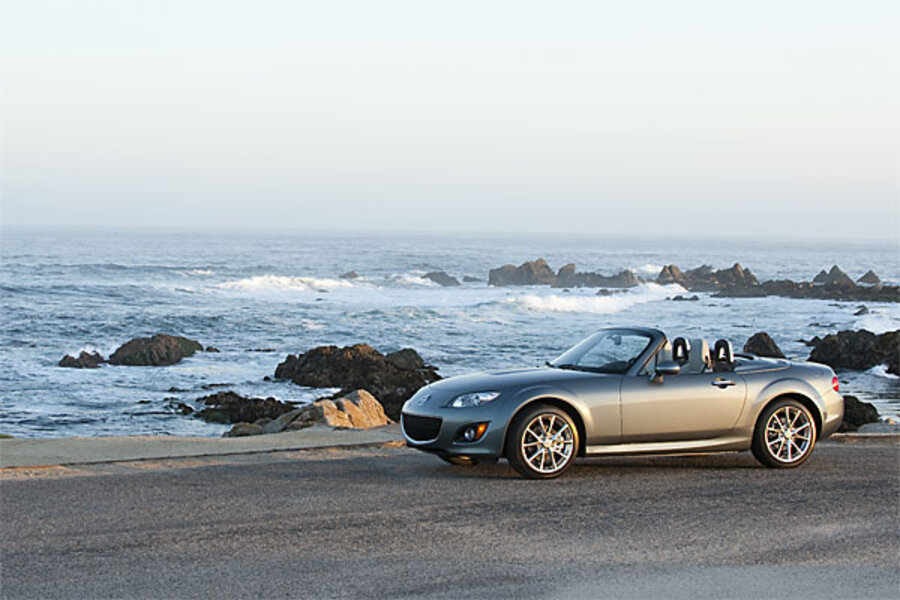Although not as high-performing as the Nissan 370Z or dearly missed Honda S2000, the Mazda Miata is a perennial favorite among critics and owners alike. Replicating the “classic roadster” aura without the inconveniences of carburetors and oil leaks, the Miata makes a great summer toy with good economics.
Its diminutive size, however, relegates it to just that. Strictly a two-seater without much more space than a duffle bag, the Miata would be difficult to live with if you need to transport more than one other person.
But thanks to its popularity the Miata has undergone a host of refinements after over a decade in Mazda’s lineup, including a retractable hardtop option, making it usable year around for bachelors and bachelorettes who don’t have long distances to drive.
For owners who pine for more power after a few years of ownership, the Miata enjoys substantial aftermarket support. Hundreds of performance and style upgrades are readily available. Just wait until the warranty expires before you start bolting on the goodies.







